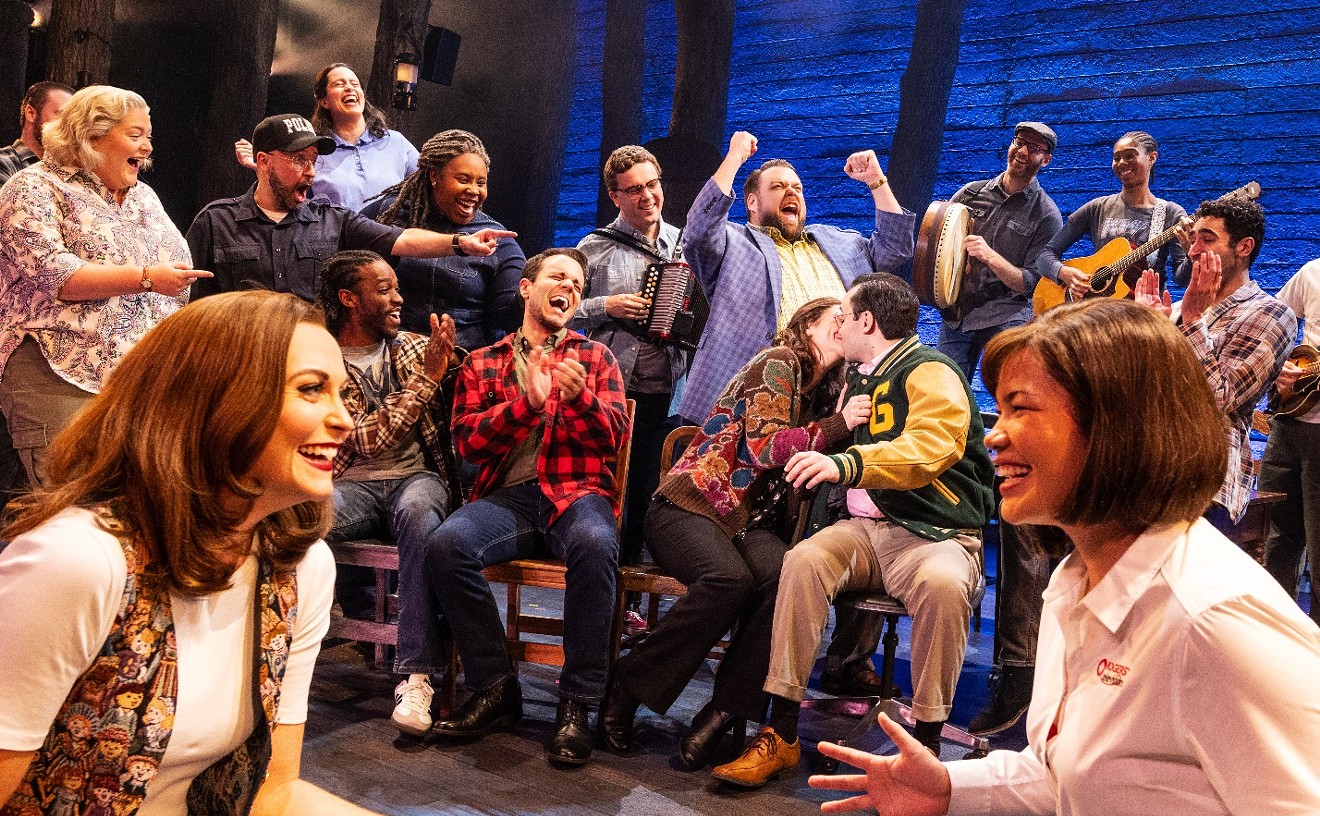Thirty years ago, cyberpunk novels and movies offered a grim view of the future — overpopulated, pollution-choked cities filled with crime, poverty, and flying cars. In this dystopian nightmare, jacked-in hackers, often equipped with cybernetic enhancements, traded skills and secrets (among other illicit things) in the virtual world, toppling governments and stealing from faceless corporations for kicks and for profit.
How wrong they were about the flying cars.
Coined by William Gibson in his short story “Burning Chrome,” then honed in his award-winning novel Neuromancer, cyberpunk was more than a literary movement. Gibson’s classic inspired the development of the internet and smart technology; shaped fashion, geek culture, and music; and even influenced our everyday language.
But as we’ve gotten more plugged into the internet and virtual reality — and watched its effects around us — cyberpunk has lost some of its punch, eclipsed by its lower-tech cousin, steampunk. Perhaps that's because reading about hackers toppling governments loses some appeal when reality mirrors fiction a little too closely.
Cyberpunk is still around, however. So if you need to dive deeper into the dark side of the cyberspace, here’s a crash course on the world of cyberpunk, from its roots in the ’60s science fiction new wave (and earlier), through the weaponized pop culture of Ready Player One.
Metropolis (1927)
The term cyberpunk wasn’t coined until 1983, but its ideas were present in some of the earliest science fiction. Fritz Lang’s silent masterpiece is set 100 years in the future, and the film follows Freder, a wealthy industrialist, and Maria, a poor worker, as they attempt to overthrow a dystopian government. The film's iconic imagery, however, revolves around a robotic version of Maria, built by Freder's mad father and whom he sends to quell the revolution.
Gary Numan's synth-pop concept album drew on the work of Philip K. Dick for its proto-cyberpunk story.
Beggars Banquet Records
Replicas (1979)
Another early adopter of the cyberpunk aesthetic was British electronic music pioneer Gary Numan. His second album was a dystopian concept piece set in a future where half-man and half-machine “replicas” perform manual labor at the behest of the mysterious Grey Men. Heavily inspired by Philip K. Dick, the album’s chilly synth sound became a sonic touchstone for the cyberpunk movement, inspiring industrial and electronic artists like Marilyn Manson and Nine Inch Nails.
Ridley Scott's Blade Runner, based on Philip K. Dick's Do Androids Dream of Electric Sheep?, defined the look of cyberpunk.
Del Rey Books
Blade Runner (1982)
Drawn from Philip K. Dick’s proto-cyberpunk novel Do Androids Dream of Electric Sheep?, Ridley Scott’s masterpiece didn’t deal with virtual reality. But its hazy, pollution-choked city, blending Eastern and Western culture with gigantic Japanese billboards towering over crumbling Los Angeles slums, established the visual aesthetic of cyberpunk. Dick was sort of the John the Baptist of cyberpunk — his work predates the movement by a good 20 years, at least, but his stories and novels, like “We Can Remember It For You Wholesale” (the basis for Total Recall), “Minority Report,” and A Scanner Darkly, helped introduce new generations to the cyberpunk aesthetic.Neuromancer (1984)
“The sky above the port was the color of television, tuned to a dead channel.” That opening sentence may not carry the same impact today, when untuned TV stations glow with a bright blue, but in 1983, it was revelatory. William Gibson’s groundbreaking debut followed a washed-up hacker turned petty criminal who leads a team of cyber-thieves on a mission with global implications in the cyberspace “Matrix." Blending street slang and computer jargon, Gibson’s prose is visceral. And while this groundbreaking book has yet to be adapted into a movie, another work in Gibson’s “Sprawl” universe, "Johnny Mnemonic," has made the jump to the big screen, and his vision of cyberspace heavily influenced another movie, to be mentioned later.Akira (1988)
One of the most notable adopters of the cyberpunk style was anime, which makes sense, as cyberpunk drew heavily on modern Japanese imagery. This 1988 classic, based on the manga of the same name, follows Tetsuo, the member of a biker gang in post-apocalyptic Neo-Tokyo. After an accident unlocks his powerful psychic abilities, Tetsuo's uncontrolled power threatens to destroy Neo-Tokyo. A cult classic on its own, Akira also paved the way for future cyberpunk anime and manga, including Ghost in the Shell and Battle Angel Alita, which James Cameron adapted last year for Alita: Battle Angel.
Spider Jerusalem is the gonzo cyberjournalist taking on corrupt governments and cyborg cults in Warren Ellis's Transmetropolitan.
Vertigo Comics
Transmetropolitan (1997)
What would happen if Hunter S. Thompson lived in a cyberpunk future? That is the starting point for Warren Ellis's electrifying comic. The story follows Spider Jerusalem, a reclusive journalist who is called out of hiding because he owes his publisher one more book. Over 75 issues, he investigates body modification cults, mysterious murders, and designer poisons as he works to take down the psychopathic right-wing president.Snow Crash (1992)
The definitive literary cyberpunk of the '90s, Neal Stephenson's audacious novel follows Hiro Protagonist, a pizza delivery boy for the mob in post-apocalyptic Los Angeles. Along with his friend Y.T. (Yours Truly), he gets involved with for-profit government spies, apocalyptic cults, and media magnates, brought together by a mysterious data file/cyber drug called Snow Crash, which disables computers and causes brain damage in its users. Stephenson uses cyberpunk as a jumping-off point to explore linguistics, history, religion, and libertarian philosophy, topics he would continue to examine even as his writing moved beyond cyberpunk.The Matrix (1999)
This Keanu Reeves flick is easily the most influential cyberpunk work of the past 30 years. Drawing concepts (and its name) from Gibson, the Wachowskis created a world where normal existence was merely a computer simulation created to keep humans pacified as they're used like batteries to power machines. The mind-bending concept fell flat over two sequels, but the stunning imagery of Reeves and Carrie-Anne Moss' bullet-time action sequences defined cyberpunk for the 21st century.Altered Carbon (2002)
You liked the TV series, why not read the book? Richard K. Morgan's brutal, award-winning novel is not for the squeamish, but you probably noticed that if you watched the series. In this hard-boiled world, people are able to store memories and personalities digitally, to be downloaded into a new body, or sleeve, upon death. The protagonist, Takeshi Kovacs, is an ex-commando who has been "resleeved" into a San Francisco cop by the centuries-old Laurens Bancroft in order to solve Bancroft's recent murder.Ready Player One (2011)
Okay, Ernest Cline’s bestselling novel is mostly a series of '80s pop culture references, but the plot is pure cyberpunk. Well, PG cyberpunk. But it checks all the boxes — in an overcrowded dystopian future, Wade, a poor teen spends his life plugged into the Oasis, a virtual world where all his dreams are reality and he's a hero, pursuing the hidden fortune left by the Oasis's eccentric creator. There’s even an evil corporation trying to conquer the Oasis, and Wade must stop it.Editor's note: This post has been updated from its original version.

















